Regular readers will know that we’ve been trying to monitor the rate of exclusions and suspensions in schools in advance of official statistics from the Department of Education.
We last looked at this at the end of the Spring Term in 2024. We now look at the full academic year 2023/24.
By contrast, the most recent (at the time of writing) official statistics for exclusions and suspensions, published in July 2023, relate to the 2022/23 academic year.
This is largely because data is collected, via the School Census process, two terms in arrears. This means, for example, that data for the summer term 2023 was collected in the January 2024 School Census. Although the census date is the third Thursday in January, schools have until the middle of February to submit the data. The data is then published some months later.
Exclusions and suspensions data for the full 2023/24 academic year will only be published next July.
However, we can get a handle on whether they have increased or not by examining absence codes from schools’ attendance registers.
Data
Pupils who are permanently excluded or suspended but who remain on the school roll are marked as code E in registers for up to five days. From the sixth (consecutive) day, alternative provision is supposed to be arranged.
Using attendance data for 2022/23 and 2023/24 supplied by 10,000 schools subscribing to FFT attendance tracker, we can summarise rates of absence due to exclusion and suspension for both years.
What we cannot do is distinguish between spells that are due to suspension and spells that are due to exclusion (or more accurately, spells that will result in due course in permanent exclusion).
Comparing our method to published statistics
As we did last time we did this exercise (based on data for the Autumn and Spring terms), we compare our exclusion statistics using attendance data with the official statistics.
The figures we produce are equivalent to the sum of the permanent exclusion rate and the suspension rate, in other words the total number of exclusions and suspensions divided by the total number of pupils.
We show our calculated figures for the full academic year 2022/23 alongside the published DfE figures in the chart below.
Our figures are fairly close to DfE figures but, if anything, are a bit lower, particularly for Years 8 to 10, the year groups with the highest rates.
Consequently, our figures for 2023/24 might be slightly under-estimated.
The increase in suspensions in 2023/24
Repeating our methodology for 2023/24, we see an increase in the rate of suspensions and exclusions across all year groups.
For example, the suspension/ exclusion rate for Year 9 in 2022/23 stood at 25.6%. In 2023/24 it increased to 28.6%, an increase of 3.0 percentage points or a 12% increase in suspensions.
For Year 7 pupils, there was a smaller absolute increase (from a lower base) of 2.6 percentage points but a larger relative increase – a 17% increase in suspensions.
The suspension rate is the number of suspensions divided by the number of pupils so a rate of 20% does not mean that 20% of pupils have been suspended. Some pupils will be suspended more than once.
But we can also summarise the percentage of pupils who are suspended or excluded at least once.
Whereas in the previous chart the highest rate was among Year 9 pupils, this time the highest rate is among Year 10 pupils (10.3% in 2023/24 compared to 9.5% in 2022/23).
That the suspension rate is more than double the rate of pupils suspended at least once implies that, on average, the mean number of suspensions per suspended pupil is above 2.
Disadvantaged pupils
We also see stark differences in the percentage of disadvantaged pupils suspended or excluded at least once compared to their peers.
Almost 1 in every 5 disadvantaged pupils (19%) in Years 9 and 10 were suspended or excluded at least once in 2023/24.
Summing up
Published DfE statistics for the 2022/23 showed that suspensions reached record levels. However, suspension data has only been collected at scale nationally since 2006/07. It may well have been the case that, had they been measured prior to that, we would have seen them fall from higher levels. This was happening with permanent exclusions when the current data collection methods were introduced.
Analysis of attendance registers for the Autumn and Spring terms combined 2023/24 suggests there has been a further increase this year. This will become apparent when DfE publishes statistics in July.
Disadvantaged pupils are disproportionately more likely than other pupils to experience exclusion or suspension.
Want to stay up-to-date with the latest research from FFT Education Datalab? Sign up to Datalab’s mailing list to get notifications about new blogposts, or to receive the team’s half-termly newsletter.

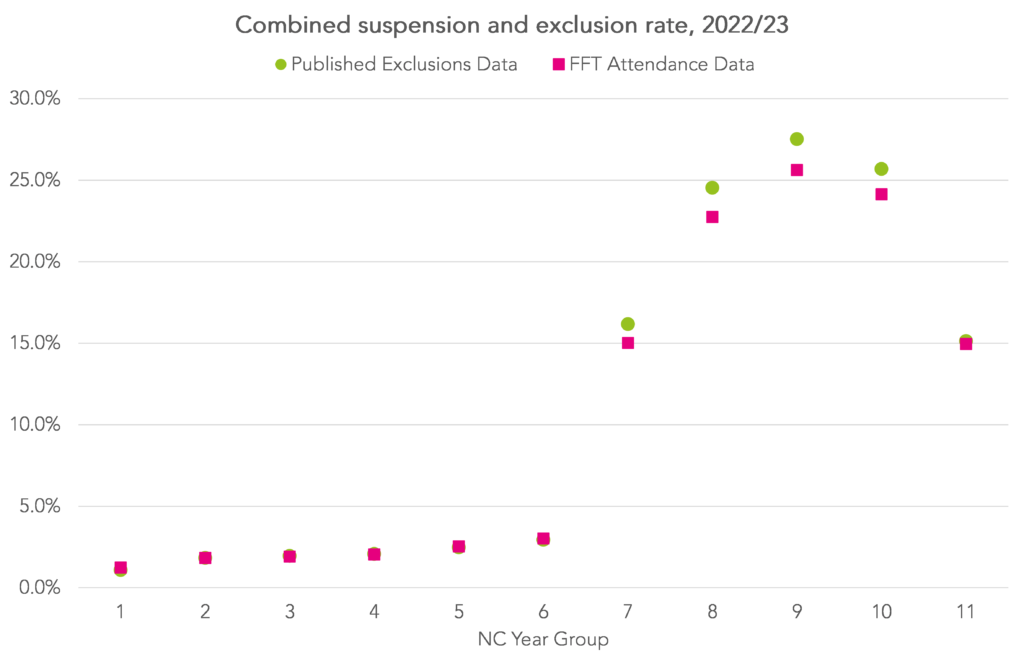

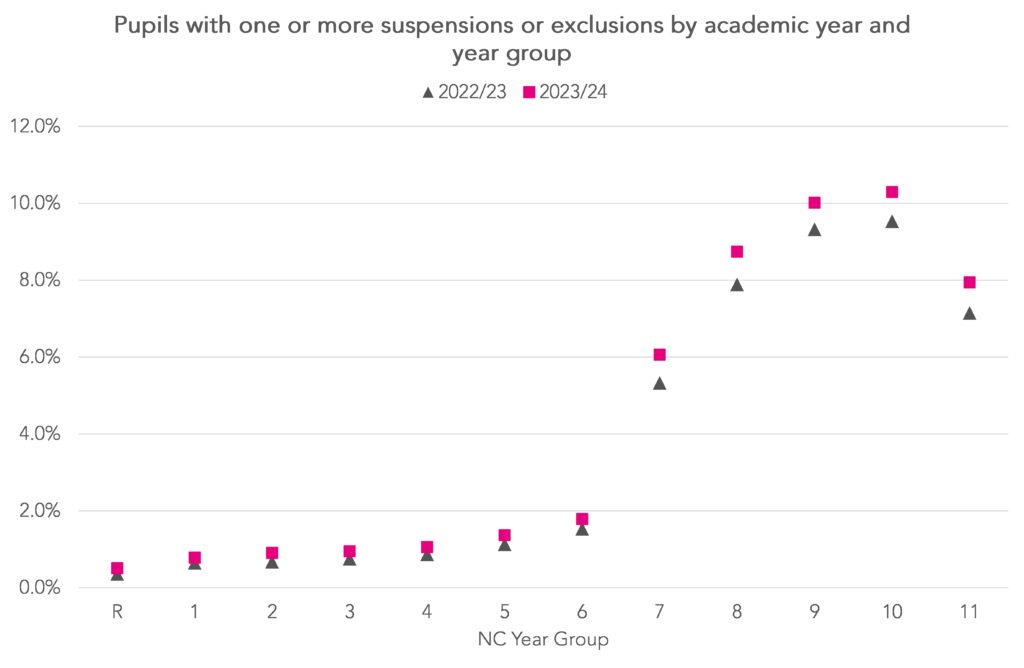
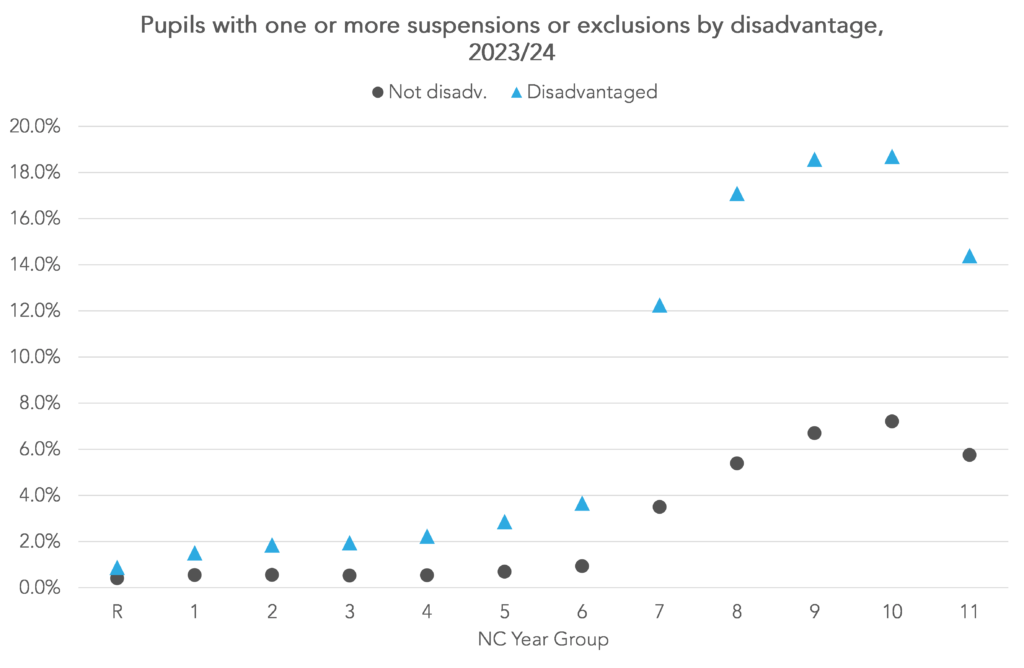
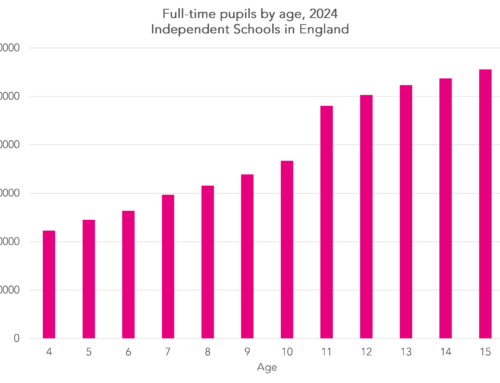
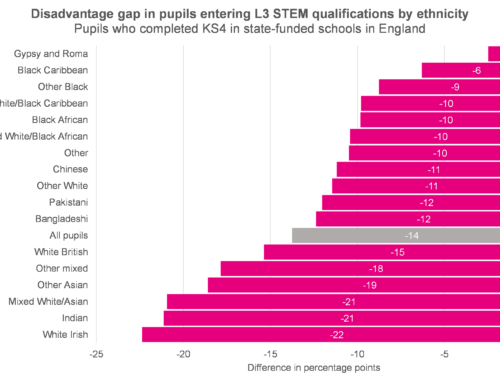
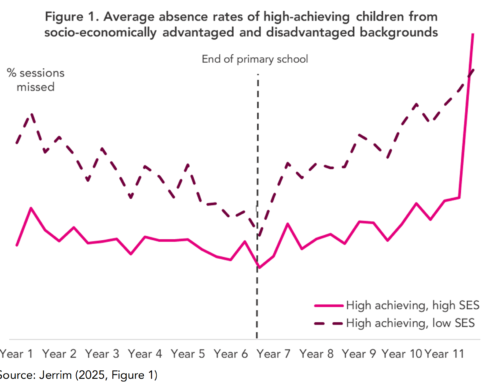


Leave A Comment